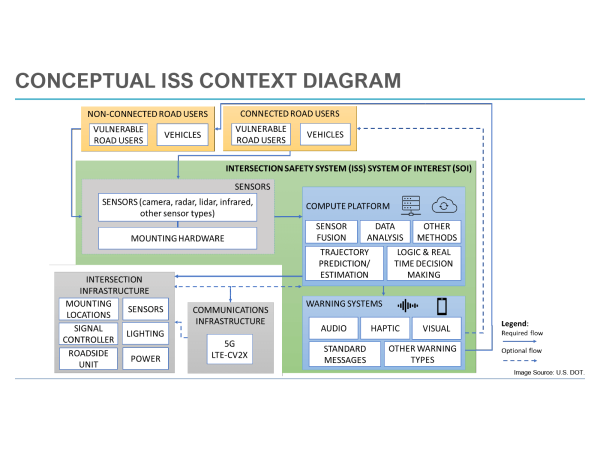 By Brock Aun
By Brock Aun
Vice President of Communications
HAAS Alert
Although there’s little media coverage or discussion on the topic, the United States is currently experiencing one of the worst periods of roadway pedestrian deaths on record. Last month, the Governor’s Highway Safety Association — an organization of state and territorial highway safety offices and transportation policy experts — released a report detailing the troubling increase in people that were struck and killed by drivers. At least 3,434 pedestrians were lost on American roads in the first half of 2022, representing a 5% increase from the same period in 2021 (a year that itself marked a 40-year high in pedestrian deaths). NHTSA data shows that since 2020, pedestrian fatalities have increased 13% nationwide.
The reasons for this troubling spike in deadly collisions with vulnerable road users are complex. The issue of pedestrian safety overlaps with everything from roadway and vehicle engineering to local mobility options, walkable city design, and even weather conditions. But one thing is clear: technology must play a crucial role in addressing this challenge and preventing these deadly collisions if we hope to see rapid improvements anytime soon.
The good news? Transportation leaders are acting with urgency. Last September, the United States Department of Transportation solicited input from transportation stakeholders on one particular element of pedestrian safety: VRU safety at intersections, where roughly one–quarter of traffic fatalities and about one–half of all traffic injuries occur. In their RFI, USDOT officials sought feedback and guidance from respondents on the feasibility and potential applications for technologies enhancing intersection safety. The department received 221 responses from a diverse spectrum of groups including private sector companies and technology vendors, state and local transportation organizations and agencies, academic researchers, advocacy groups, and local communities. You can read the summary of their responses here.
Last month, USDOT released the results of their research and outlined their next steps. The department’s summary report outlines near-term opportunities for technological enhancements at intersections that can function as a safety system for vulnerable road users, including the deployment of machine vision, sensor fusion, and other perception technologies for sensing and detection, as well as the integration of AI and machine learning to fuse data across machine vision sensing modalities to improve awareness and anticipate safety threats. The USDOT also described a vision of warning delivery enhanced with tools like digital, audible, and visual alerting to improve safety across all modalities of transportation.

Department officials made clear that realizing these objectives will require overcoming significant challenges, including both technical hurdles, intermodal communication requirements, and scalable adoption models for communities of every size across the country. Nevertheless, for automotive and transportation entities seeking a glimpse of the department’s vision of the future, their findings and considerations in this report provide a lot of promise. While previous moonshot USDOT efforts on singular technologies like DSRC led to frustrations and disappointment, the department’s recent efforts have embraced a much more enriched toolbox approach to connectivity and technology that places a heavy emphasis on viability and real-world use cases. For suppliers and innovators in transportation, this means that there’s never been a better chance to demonstrate the lifesaving potential of new tools and technologies.
Signup For The Bike Lane Newsletter
